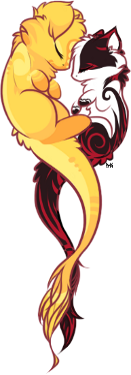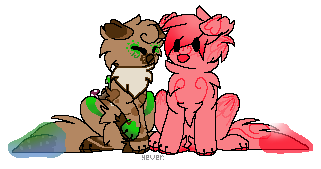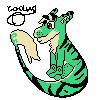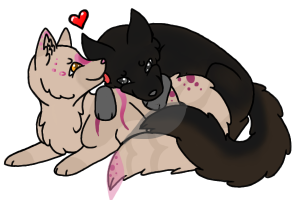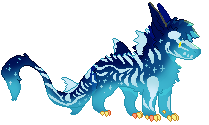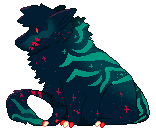
Main Adopts.
Slots- There will be 8 slots total for scbs for now.
about the species-
Shovel-claw burrowers (scbs) are large creatures resembling ant eaters. Sometimes you will see them rest on their knuckles due to their claws being too long to use their paws, but while walking and foraging they prefer to walk on their hind feet so their claws are easier to use; when a scb stands up its hind feet are not quite the same as an ant eater, they are more like that of a standing lizard, a bird or a dinosaur. This allows them to bend forward and claw the ground. When a scb feels threatened he/she will stand straight up ready for attack. They know they are much larger than you and can be quite dangerous. Most scbs range from the size of an adult pig to the size of a small horse. A shovelclaw is an omnivore. They will eat practically anything with their long tongue strawed tongue, but usually they prefer nectar and insects. They use their long claws for defense and for searching food. Also sometimes for a good scratch for a friend's itch. Most shovel-claw burrowers are migratory. They eat a lot of food so they stay wherever food is plentiful. But if food supplies run well they will herd off to find more. For now, larger scbs are the only ones known to exist. But some say they've seen creatures resembling them the size of a mouse. Who knows, maybe we'll discover them someday.
Teenage scbs have grown to full size and will not likely grow anymore. [I can't really do teen lines. ]
Male scbs will often stand on their hind legs to 'challenge' one another over a mate.
Like horns for some adult species, Male scbs can sometimes grow extravagant colored tufts on the back of their mane that match their tongues, eyes, and claws to show dominance and attract a mate when they're an adult.
Baby scbs are carried by their mother and cling onto their mother's back for the first year of their life.
After a year the young burrowers will start to wander away from their parents, but they won't start trying to forage for their own food until they are 5 years old. After five years old, young scbs will start socializing with other young scbs. they are very social animals and bond easily, if a young scb happens to know a human from a young age, they can have similar bonds to the ones they have with their own kind.
Sounds they make are a various amounts of grunts, squeaks, whistles, and chattering noises. Some say that a couple of their noises resemble barking.
Scbs diets consist of insects, fruit, and nectar. They can grow used to sweets and may also eat small pieces of meat.










